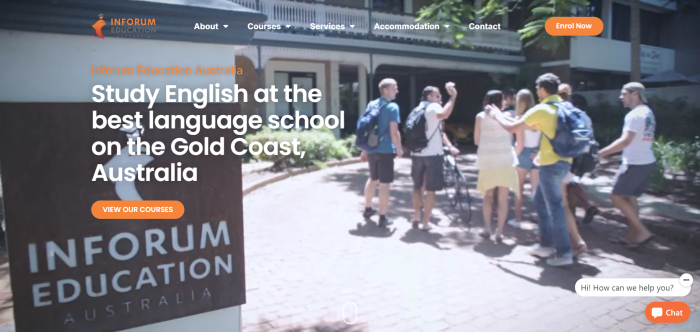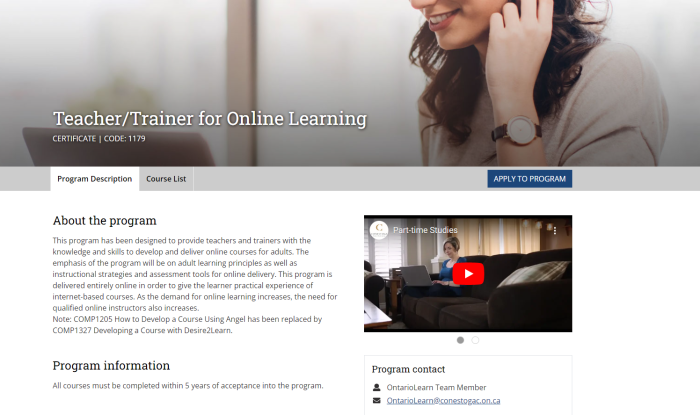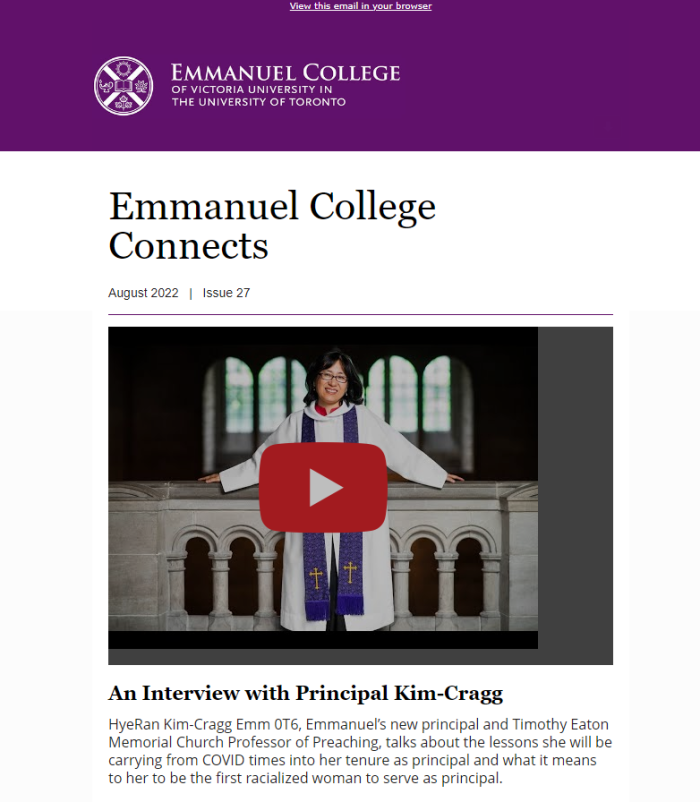A compelling video can do wonders to improve your school’s engagement and brand awareness. After all, it can serve as a visually captivating way to showcase your school and its community. But when it comes to producing these types of promotional videos for schools, you may be picturing a difficult process that requires a lot of time and resources—not to mention complex equipment and tools.
However, that’s not the case.
Even schools with a modest budget or limited resources can create powerful videos that resonate with prospective students. In fact, school marketers don’t need to have a video production background or access to advanced multimedia tools to create promotional videos for their school. With an effective video content marketing strategy and basic equipment, you can begin to produce videos that give your prospects an insider perspective.
Not sure how to get started? Here’s an introduction to video marketing best practices and we break down the steps you’ll need to take, along with top tips and best practices, to help you successfully create and promote your video content—all while working on a limited budget.
Identify Your Goals and Audience in a Video Marketing Strategy
If you’re wondering how to make promotional videos for schools, then consider starting with a strong video marketing strategy. Part of mastering your video marketing strategy includes identifying your goals and target audience. By doing so, you can stay on track and on budget—focusing your resources on the efforts that help you better meet your school’s objectives. This can include:
- Building brand awareness of your school
- Boosting conversions and enrollments
- Increasing brand engagement on social media
- Reinforcing your brand identity through storytelling
After determining your objective, you’ll be better positioned to plan your content creation and distribution efforts. Through this process, it’s important to keep your student personas in mind. This way, you ensure that your video conveys a targeted message that will more strongly resonate with your prospects—motivating them to take action.
Convey Your Brand through Short and Simple Promotional Videos for Schools
A powerful promotional video for a school typically conveys a strong brand identity. It can be used to communicate the school’s unique selling points as well as its mission and objectives. The key is to keep it consistent with your school’s other messaging, making your overall marketing efforts cohesive.
If your goal is to boost brand awareness or reinforce your brand identity with storytelling, then you’ll want to focus on creating brand-building videos. It’s always a good strategy to keep these videos clear and concise, long enough to communicate your message but short enough to maintain your audience’s attention all the way through.
According to HubSpot, 64% of surveyed marketers believe that 20 to 60 seconds is the optimal length range of a short-form marketing video, and 36% believe the best length of a general marketing video should be around one to three minutes.
Once you figure out your goals, you can create branded content that helps you achieve them.
Example: As a form of self-introduction, Oxford College has created a short video that welcomes prospects and invites them to discover what the school is all about. Here, a presenter outlines the benefits of attending the school, while background footage shows what the environment is like.

This approach can inspire you to gather background footage of your school. To further simplify your efforts, you can simply add a voice-over by recording a script instead of featuring a presenter.
Consider Different Types of School Promotional Video Ideas
There are many ways to present, curate, and promote your school’s brand with video content. By exploring different school promotional video ideas, you can begin developing the type of content that would work best for your school, its audience, and its needs. This can include:
- Welcome messages
- Campus tours
- Student testimonials
- Admissions and enrollment guides
- Program or course showcase
- Holiday video content
- Livestream events
These ideas are still accessible for schools with a low budget or limited resources. They can be filmed with basic equipment to communicate a simple message or showcased through basic editing techniques—giving your prospects a more engaging form of content.
Example: The Canadian Business College shares a short video using a student’s testimonial. It starts with simple footage of the student walking in the city and then cuts to an interview that highlights the student’s experiences:

Schools can follow a similar template by filming a basic interview with a student. The extra shots of them on campus or in the city can be optional, and the footage of the interview itself would then make up the core of your efforts.
If your school is hosting an open day, then you can consider filming that event and inviting attendees to share their thoughts, feelings, and experiences on camera. Stuartholme school takes this approach with their 2021 Open Day Livestream:

With a basic microphone and camera, a school marketer can film different interactions with prospective students and families to create a promotional video. This content can be live streamed on social media, using Facebook Live, for example, to show your audience what they may be missing out on. Alternatively, you can choose to film, edit, and then share the video after the event.
Build a Basic Setup to Create Promotional Videos for Schools
The idea of creating different types of promotional videos for schools may be overwhelming, but it’s possible—even with a low budget. If you’re wondering how to make a promotional video for a school, then consider getting started with just the basic gear—keeping everything within your budget. There’s no need for anything fancy. A good starting point is to get:
- An advanced smartphone or digital camera
- A good microphone
- A simple tripod
- A basic lighting kit (key for indoor filming)
Another tip to keep in mind is to simplify your ideas and to stick to the type of content you know your team is capable of producing. This also applies to editing. Keeping things simple, using direct cuts and built-in transitions provided by a basic video editing tool can be enough to convey what you may be envisioning.
Example: Wycliffe Independent School introduces its Sixth Form curriculum in a simple video that features cut-in b-roll supplemental background footage of the school, along with occasional still shots and images. Superimposed text is included to convey key messages simply. To keep it fresh and interesting, the school incorporates brief student interviews.

All of this content can be easily filmed and put together with basic equipment and video editing software. With the help of our team here at HEM, your school can use these efforts to develop a video content strategy.
Experiment with Plug-and-Play Video Editing Tools and Resources
When it comes to editing promotional videos for schools, it’s a good idea to use a friendly yet effective video editing tool. Your school doesn’t have to invest in the latest software. Choosing an accessible and beginner-friendly tool should still give you the ability to make the changes you need to put together effective video content.
School marketers without a strong video production background can consider using their computer’s built-in video editor or plug-and-play video editing software. For those on an Apple computer, iMovie is a great free option with lots of controls and transitions to explore and play with. Solid alternatives for both Apple and Windows users include Animaker, Nero Video, Filmora, and CyberLink PowerDirector.
If you’d like to add variety to your content, you can explore various online resources for royalty-free images, videos, and music. Here, it’s important to check copyright laws and licensing. Pixabay is a great resource that provides copyright-free images, videos, and music. Videvo is another resource for stock footage, offering different licensing plans. If you’re searching for background music specifically, then consider using Bensound—which also offers different pricing plans.
Source New Video Content from Your Student Community
User-generated content is a strong digital marketing tactic that can be applied to enhance your school’s video content strategy. Research shows that 64% of consumers are more likely to share content about a brand they like when this brand re-shares content created by customers.
In the case of education marketing, prospects and students may be more drawn to post about the school if their content will be re-shared by them. Not only can this boost your school’s engagement numbers, but it can also help you diversify your content and lessen the pressure of constantly needing to create something new.
Through “student-generated” video content, you can showcase your school and the student experience more authentically. This way, you can promote transparency as well as content that resonates more powerfully with your prospects. Embracing this approach can be an accessible, low-effort way to bolster content creation efforts and facilitate video marketing for schools.
Example: Toronto Metropolitan University (previously Ryerson University) shares a video filmed by a student. Here, the student’s personality shines as she goes over what she typically eats in a day as an online student at the university.

In addition to being engaging, these types of videos introduce the opportunity to feature student ambassadors. Your school can collaborate with its student ambassadors to create more appealing videos that highlight your school’s community.
In the example below, Xavier College presents a campus tour hosted by two student ambassadors. Taking the time to feature your students in your promotional videos can help you better connect with your audience.

Create Contests to Generate Video Submissions
One way to encourage user-generated content is to host a contest and make it clear that your school is seeking out submissions. You can develop a guideline for your audience to follow and ask them to share what they create using branded social media hashtags. Branded hashtags make it easy for you and your audience to browse submissions, ultimately boosting engagement with your school.
Another trick is to incentivize prospects to apply. You can do this by offering giveaways, special prizes, and free swag. For example, Minnesota State University Moorhead created a #BeADragon campaign, inviting prospects to use this hashtag on Twitter to explain why they want to attend the school. Contestants can submit images, text, and videos for a chance to win a scholarship. The video below describes the campaign and introduces the school’s scholarship winner:

Promotional videos for schools that take the form of a contest serve to build excitement around your school’s brand, giving your community the opportunity to shine and showcase its voice. These video contests can also help you boost awareness as more participants join in hopes of winning a compelling prize.
Promote Your Videos through Marketing and Advertising Channels
After looking into how to make an advertisement video for a school, it’s time to figure out how best to share it. A good starting point is to review your digital advertising mix and channels, along with your school’s objectives, to identify which efforts are worth investing in.
You can choose to focus on social media marketing to build organic engagement or use your video content in paid advertising. With a set budget and clear goals, you can explore different options and platforms—making the most out of video ads for schools.
Embed Promotional Videos for Schools on Your School’s Website
Your school’s website acts as an essential hub of information, prompting your prospects to explore what your school has to offer. By featuring videos in this space, you can better maintain your website visitor’s attention and interest—visually showcasing what makes your school a compelling option for their learning journey.
In terms of placement, you can feature your video content on the homepage or on key pages of your school’s website. Doing so can help you decrease the bounce rate, keeping visitors on the page longer. It’s worth noting that promotional videos for schools are also helpful to include on landing pages, which can increase your lead generation efforts.
Example: Inforum Education presents a captivating video on its homepage, positioning it as the hero banner so it’s the first thing that visitors can see:

Positioning a video on the right-hand side of a webpage is also another popular placement, particularly when this page includes a lot of content.
Conestoga College’s Continuing Education department does this with its program pages, showing a relevant video at the top right-hand side to further entice prospects into taking the next step and submitting an application.

Source: Conestoga College Continuing Education
Repurposing your promotional videos in this way can help your school elevate its digital marketing strategy, giving you the opportunity to maximize the ROI of your content development efforts.
Share Your Promotional Videos via Email Marketing
If you’re eager to share a video with a particular audience segment, then consider using email marketing workflows and campaigns. Email marketing naturally provides you with a direct channel of communication, enabling you to send targeted and personalized messaging. By including videos in these messages, you can better capture your audience’s attention and direct them to where you want them to go.
When drafting the perfect email, be sure to use compelling subject lines and calls to action. This way, you can more effectively drive traffic from email campaigns to your website and landing pages.
Example: Emmanuel College embeds a video in its email messaging, directing prospects to the school’s YouTube page:

Source: Emmanuel College
Taking this approach with video marketing for higher education can be a way for you to increase views on a specific video while also boosting engagement on your social media platforms.
Post Your Video Content on Social Media for Better Engagement
Since social media is so visual-heavy, it becomes a great place to share your video content. Combining a social media marketing strategy with video content can give your inbound marketing efforts a great boost.
Depending on your audience and the type of content you create, you may want to consider different platforms. For example, career colleges may be more invested in LinkedIn and Facebook, while schools targeted Gen Z-ers and millennials may focus their efforts on TikTok and Instagram. YouTube is another incredibly popular platform for many schools when it comes to sharing video content.
Generally speaking, YouTube is a great platform for posting long-form videos, such as longer campus tours and student interviews. That said, the platform is also embracing and encourages shorter videos through YouTube Shorts.
Sharing short-form videos is a key factor for a successful video marketing strategy on social media. This is particularly the case when it comes to sharing content on TikTok. EDHEC Business School in Lille has created a 35-second video that highlights the top spots for those studying in the city. It’s short, engaging, and easy to follow—motivating prospects to consider the benefits of studying at that campus.
@edhec_businessschool Are you studying in Lille?☀️ Here are our some of our favorites places to discover! #lille #vlog
These options provide schools with plenty of opportunities to share promotional videos. However, it all boils down to the audience you aim to reach and the goals you need to achieve. With that figured out, promotional videos for schools can be shared to ultimately improve inbound marketing efforts and maximize ROIs.
Optimize and Track the Performance of Promotional Videos for Schools
Even after you produce and share your videos, the work isn’t quite over. To get the most out of your efforts, you’ll want to optimize your videos and regularly track your performance. This way, you can ensure that your school is actually reaching its audience and connecting with them.
A rule of thumb is to make sure that your videos are well-optimized for the platform they’re going on. This handy guide includes key specs for video marketing on each social media channel, giving a higher chance of success. Other things you’ll want to keep in mind include using the right keywords in your title, description, and tags for better visibility.
It’s a good idea to review your performance and track your engagement. If you notice a specific video performing better or worse than the others, then you have an opportunity to analyze and capitalize on what worked—or fix what didn’t in the next video. It may start with lots of trials and errors, but this process can help you nail down what your audience wants to see most. In turn, you can create the kind of video content that provides the most value.
Even with a low budget and limited resources, you can begin filming and creating fun and engaging videos that generate results. When shared strategically, these promotional videos for schools can provide many benefits—ultimately helping you stand out and develop a visual identity in a competitive market.







